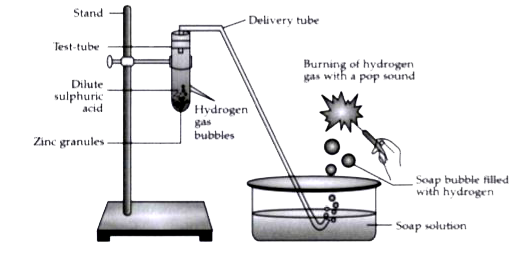Identify the balanced chemical equation from the following:
Pb(NO3)2(s)→2PbO(s)+4NO2(g)+O2(g)
2Pb(NO3)2(s)→2PbO(s)+4NO2(g)+O2(g)
2Pb(NO3)2(s)→2PbO(s)+2NO2(g)+O2(g)
Pb(NO3)2(s)→PbO(s)+2NO2(g)+O2(g)
To identify the balanced chemical equation from the given options, follow these steps:
Step 1: Understand the Concept of a Balanced Chemical Equation
A balanced chemical equation has the same number of atoms of each element on both the reactant and product sides. This means that the law of conservation of mass is satisfied.
Step 2: Analyze Each Given Equation
You will need to look at each of the four equations provided and count the number of atoms for each element on both sides of the equation.
Step 3: Count Atoms in Each Equation
1. Equation A: Count the number of atoms for each element on both sides.
2. Equation B: Count the number of atoms for each element on both sides.
3. Equation C: Count the number of atoms for each element on both sides.
4. Equation D: Count the number of atoms for each element on both sides.
Step 4: Compare the Counts
For each equation, compare the counts of each element:
- If the number of atoms for each element is equal on both sides, then the equation is balanced.
- If not, the equation is unbalanced.
Step 5: Identify the Balanced Equation
After analyzing all equations, identify which equation has equal numbers of atoms for all elements on both sides.
Example Analysis
Let’s assume you have the following hypothetical equations to analyze:
- Equation A: Pb + N2 → Pb3N2
- Equation B: 2Pb + N2 → 2Pb3N2
- Equation C: Pb + 2N2 → PbN4
- Equation D: Pb + N2 → PbN2
For each equation, count the atoms:
- Equation A:
- Reactants: 1 Pb, 2 N
- Products: 3 Pb, 2 N (Unbalanced)
- Equation B:
- Reactants: 2 Pb, 2 N
- Products: 6 Pb, 2 N (Unbalanced)
- Equation C:
- Reactants: 1 Pb, 4 N
- Products: 1 Pb, 4 N (Balanced)
- Equation D:
- Reactants: 1 Pb, 2 N
- Products: 1 Pb, 2 N (Balanced)
Conclusion
In this hypothetical case, Equations C and D are balanced. You would then choose the correct one based on the options provided.
A balanced chemical equation has the same number of atoms of each element on both the reactant and product sides. This means that the law of conservation of mass is satisfied.
You will need to look at each of the four equations provided and count the number of atoms for each element on both sides of the equation.
1. Equation A: Count the number of atoms for each element on both sides.
2. Equation B: Count the number of atoms for each element on both sides.
3. Equation C: Count the number of atoms for each element on both sides.
4. Equation D: Count the number of atoms for each element on both sides.
For each equation, compare the counts of each element:
- If the number of atoms for each element is equal on both sides, then the equation is balanced.
- If not, the equation is unbalanced.
After analyzing all equations, identify which equation has equal numbers of atoms for all elements on both sides.
Let’s assume you have the following hypothetical equations to analyze:
- Equation A: Pb + N2 → Pb3N2
- Equation B: 2Pb + N2 → 2Pb3N2
- Equation C: Pb + 2N2 → PbN4
- Equation D: Pb + N2 → PbN2
- Equation A:
- Reactants: 1 Pb, 2 N
- Products: 3 Pb, 2 N (Unbalanced)
- Equation B:
- Reactants: 2 Pb, 2 N
- Products: 6 Pb, 2 N (Unbalanced)
- Equation C:
- Reactants: 1 Pb, 4 N
- Products: 1 Pb, 4 N (Balanced)
- Equation D:
- Reactants: 1 Pb, 2 N
- Products: 1 Pb, 2 N (Balanced)
In this hypothetical case, Equations C and D are balanced. You would then choose the correct one based on the options provided.
Topper's Solved these Questions
- SAMPLE PAPER 11BOOK - EDUCART PUBLICATIONCHAPTER - SAMPLE PAPER 11EXERCISE - SECTION -B
10 Videos
- SAMPLE PAPER 11BOOK - EDUCART PUBLICATIONCHAPTER - SAMPLE PAPER 11EXERCISE - SECTION -C
2 Videos
- SAMPLE PAPER 10 BOOK - EDUCART PUBLICATIONCHAPTER - SAMPLE PAPER 10 EXERCISE - SECTION -B
11 Videos
- SAMPLE PAPER 4BOOK - EDUCART PUBLICATIONCHAPTER - SAMPLE PAPER 4EXERCISE - SECTION C
4 Videos
Similar Questions
Knowledge Check
Study the given experimental set-up and answer any four questions from (i) to (v) given below.

Identify the balanced chemical equation for the given reaction.AZn(l)+2H2SO40(l)→ZnSO4(s)+H2(l)BZn(s)+H2SO4(aq)→ZnSO4(aq)+H2↑⏐CZn(s)+H2SO4(aq)→ZnSO4(aq)+H2↑⏐D2Zn(aq)+2H2SO4(l)→2ZnSO4(s)+2H2(l)
Write the balanced chemical equation for the following and identify the type of reaction in each case :
Hydrogen (g) + Chlorine (g) → Hydrogen chloride (g)
View SolutionWrite the balanced chemical equation for the following and identify the type of reaction in each case :
Zinc carbonate (s) → Zinc oxide (s) + Carbon dioxide (g)
View SolutionWrite the balanced chemical equation for the following reaction and identify the type of reaction and define it.
'Iron III oxide reacts with Aluminium and gives molten iron and aluminium oxide'.
View SolutionWrite the balanced chemical equations for the following reactions and identify the type of reaction in case.
Ethanol is burnt in air to form carbon dioxide, water and releases heat.
View SolutionWrite the balanced chemical equations for the following reactions and identify the type of reaction in case.
Magnesium ribbon is burnt in an atmosphere of nitrogen gas to form solid magnesium nitride.
View SolutionWrite the balanced chemical equations for the following and identify the type of reaction in each case.
Magnesium(s)+Hydrochloric acid(aq)→Magnesium chloride(aq)+Hydrogen(g)
View SolutionWrite the balanced chemical equations for the following and identify the type of reaction in each case.
Hydrogen(g)+Chlorine(g)→Hydrogen chloride(g)
View Solution
